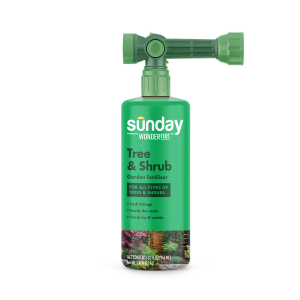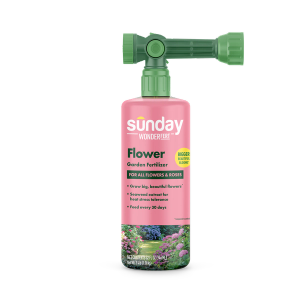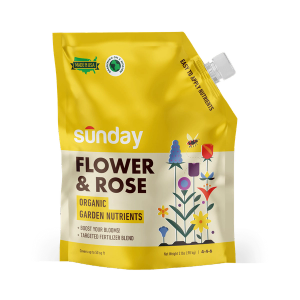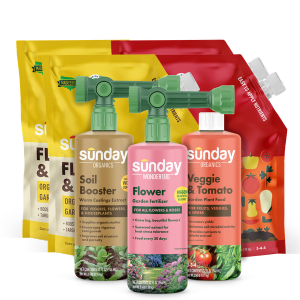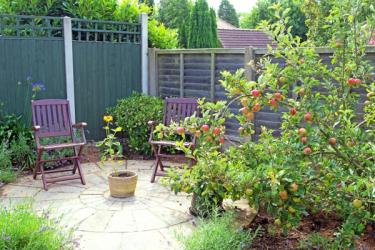
Why grow fruit trees?
Growing your own fruit is a fun, rewarding, and – dare we say? – fruitful garden activity. Not only do you get a harvest at the end of your efforts, but you also have control and knowledge of what exactly goes into your produce during production.
What are some easy fruit trees for beginners?
Cherries, apples, peaches, apricots, and plums are all great beginner fruit trees to try growing in your own garden. Even citrus fruits can be grown at home, as long as you live in an area that doesn’t see freezing temperatures often. Just keep in mind – easy fruit trees are still a labor of love, and will require some special care throughout the years.
How to grow fruit trees
First, figure out how many trees you actually need in order to get fruit. Many fruit trees cannot pollinate their own flowers. Apples, sweet cherries, pears, apricots, tangerines, mandarins, and plums require multiple trees of different, compatible cultivars that bloom at the same time to pollinate and produce fruit. Tart cherries, peaches, and most other citrus fruits are the exceptions, and can self-pollinate.
Sunday Tip:
Most fruit trees won’t produce fruit for several years after planting. Don’t worry, though - your tree is working hard in the meantime to produce a deep foundation of roots and shoots to support the bounty ahead.
Pick your fruit tree
When choosing a fruit tree to grow, it’s most important to choose a fruit tree that:
- Bares fruit that you'll actually want to eat (or bake with!)
- You’re willing to put in some work to maintain and harvest
- Is a species that is suitable for your hardiness zone
- Is disease or pest resistant, particularly if you have a known pest issue in your region
- Will be a manageable size when mature
Plant your fruit tree
Plant your new tree in spring or fall to take advantage of the cooler temperatures and seasonal rainfall. Plant your fruit tree in a location with good air drainage – avoid planting at the base of a slope or in low areas of the landscape, where cold air sinks and can cause cold or freezing damage. If you are planting multiple trees of the same type, make sure they are within about 100 feet of each other to ensure pollination.
Maintain your fruit tree
Remove weeds
Hand pull weeds around your fruit tree to prevent competition for water and nutrients, and to remove pest habitat.
Fertilize sparingly (unless you’re growing citrus)
It may sound counterintuitive, but most fruit trees actually produce better with less fertilizer. Too much fertilizer, particularly nitrogen, can promote leafy growth and pull energy away from flower and fruit production. The exception here are citrus fruits, which can be fertilized in the spring using an even-analysis (10-10-10, for example) or a citrus-specific fertilizer that contains micronutrients.
Prune regularly
Start pruning immediately after planting to develop the tree’s shape, then prune annually to maintain the desired shape and to remove any branches with narrow crotch angles, disease, or damage. Many fruit trees only produce fruit on newly produced wood, so unpruned trees may stop producing fruit over time. Typically, peaches produce on 1-year-old wood, and apples, cherries, plums and pears produce their best on 2-3 year wood. Prune your trees during the dormant season before new growth begins in spring (typically February-April is the best time for most fruit trees).
Thin or remove some fruit
Removing some fruit early on can actually benefit the tree – and production – in the long run. Too much fruit can be heavy and can damage the tree. Plus, thinning fruit concentrates nutrients and sugar in the remaining fruit, leading to larger, sweeter fruit when harvest time comes.
Start thinning when fruits are about the size of a quarter. Remove any damaged fruit, then remove all but one fruit in each cluster, leaving the largest of the group to grow. The amount you thin will depend on the type of fruit. Aim for the following densities:
- Peaches: A single fruit every 4-8 inches
- Plums: A single fruit every 4 inches
- Apples: A single fruit every 4-6 inches
- Cherries: Don’t actually need to be thinned - yay!
Protect from disease and harsh weather
Many fruit trees are prone to disease. To prevent disease issues, keep leaves and fruit dry, prune to promote good airflow, and thin fruit to prevent rubbing. If diseases do pop up, prune, destroy and dispose of any diseased leaves, fruit, and branches to prevent the spread.
Most citrus trees won’t handle freezing temperatures, especially when young. If you do have an unusual freeze event coming in, make sure to protect your trees from frost by covering.
Harvest your fruit
The best part! Harvest fruit gently to avoid bruising. Store harvested fruit in a cool, dark area or process soon after picking. If you produce more than you can handle, consider donating clean, undamaged produce to local food rescue programs, food pantries, or share with friends and neighbors.
Cited sources
Citrus Culture in the Home Landscape. University of Florida, Institute of Food and Agricultural Sciences.
Citrus Fruit for Southern and Coastal Georgia. University of Georgia Cooperative Extension.
Cornell Guide to Growing Fruit at Home. Cornell Cooperative Extension.
Growing Fruit Trees in Maine. University of Maine Cooperative Extension.
Growing stone fruits in the home garden. University of Minnesota Extension.



